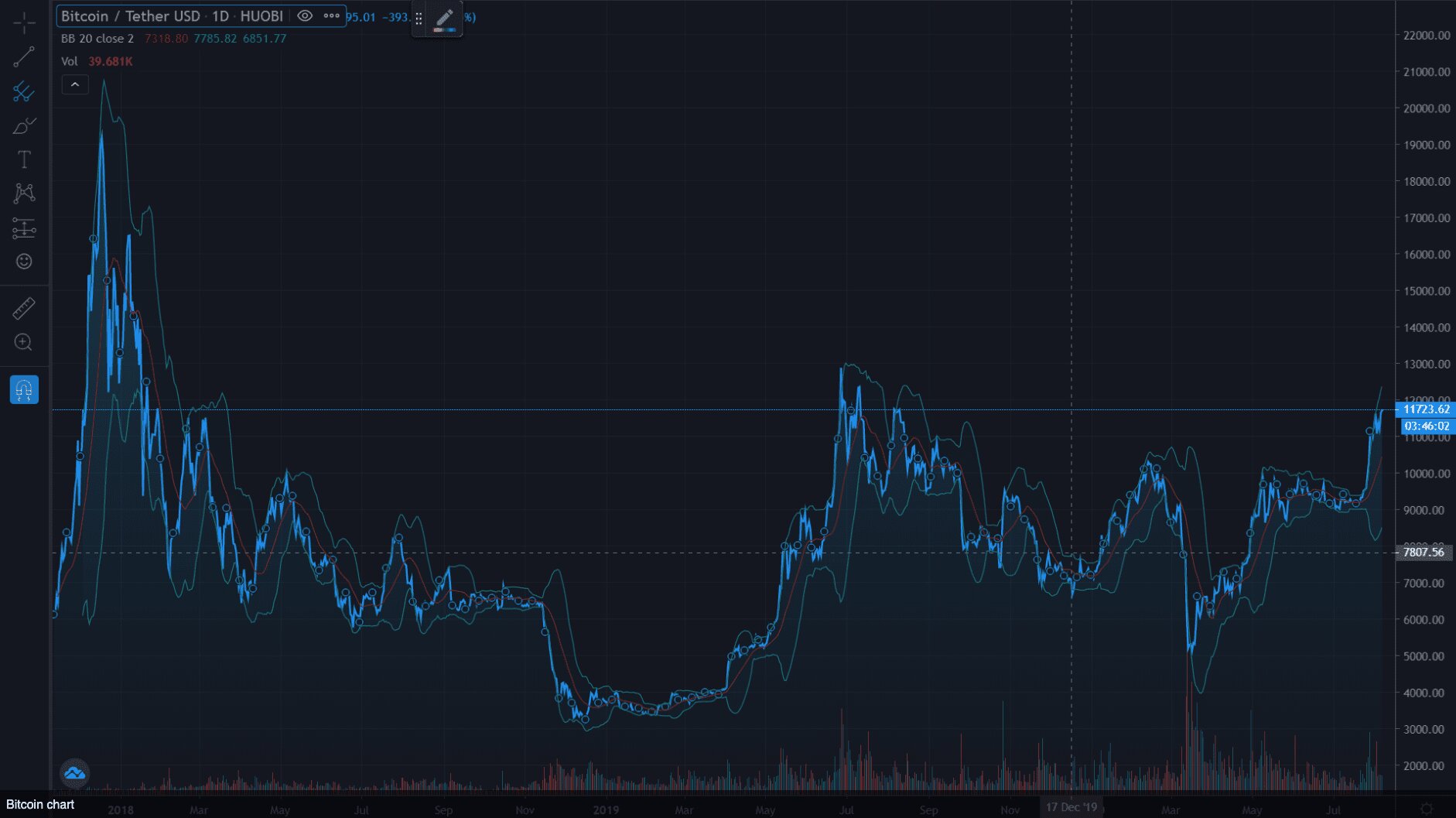What is Margin Lending?
Margin lending is a financial strategy that allows individuals to borrow funds from a broker to invest in securities, such as stocks or bonds. It provides investors with the opportunity to leverage their investments by utilizing borrowed money. In simple terms, margin lending allows you to use your existing investments as collateral to borrow additional funds.
When you engage in margin lending, you are essentially borrowing a portion of the money needed to purchase securities. The borrowed funds, also known as margin loans, are provided by the broker and are secured by the value of your investment portfolio. This allows you to increase your purchasing power and potentially access greater investment opportunities.
The specific terms and conditions of margin lending can vary depending on the broker and the country in which you reside. However, the basic concept remains the same: you can borrow money against your securities to expand your investment capabilities.
It is important to note that while margin lending can be a powerful tool for amplifying your investment returns, it also comes with its own set of risks and considerations. Before engaging in margin lending, it is essential to thoroughly understand the terms and risks involved, as improper use of margin loans can lead to significant losses.
In the next section, we will explore the basics of margin lending and how it works, providing you with a comprehensive understanding of this financial strategy.
The Basics of Margin Lending
Margin lending operates on the principle of leveraging your investments to increase potential returns. When you open a margin account with a broker, you provide a certain amount of initial equity, often referred to as the margin requirement. This initial equity serves as a cushion against potential losses.
Once your margin account is established, you can then borrow funds from the broker to invest in additional securities. The amount you can borrow is usually determined by a specific ratio called the margin requirement, which is set by the broker. For example, if the margin requirement is set at 50%, it means that you can borrow up to 50% of the value of your eligible securities. The remaining 50% must be covered by your initial equity.
As you make investments using borrowed funds, your portfolio value may fluctuate. Brokers monitor the value of your investments and have certain thresholds known as maintenance margins. If the value of your investments falls below the maintenance margin, you may receive a margin call, requiring you to either deposit more funds into your margin account or sell some of your securities to meet the margin requirements.
Margin lending offers the potential for increased returns by providing access to a larger pool of funds. This can allow you to take advantage of investment opportunities that you may not have otherwise been able to afford. Additionally, the interest rates on margin loans are often lower compared to other types of loans, making it a cost-effective strategy for borrowing.
However, it is important to be aware of the risks associated with margin lending. If the value of your investments declines significantly, you could face substantial losses, and you are still responsible for repaying the borrowed funds plus interest, regardless of the performance of your investments.
In the next section, we will explore the advantages and benefits of margin lending, shedding light on why investors choose this approach to grow their portfolios.
Advantages and Benefits of Margin Lending
Margin lending offers several advantages and benefits that make it an attractive option for investors looking to expand their investment opportunities:
- Increased purchasing power: One of the primary benefits of margin lending is the ability to leverage your investments. By borrowing funds, you can multiply your purchasing power and invest in a wider range of securities, potentially increasing your returns.
- Access to more investment opportunities: Margin lending allows you to seize investment opportunities that you might not have been able to afford without borrowing. It provides you with the flexibility to invest in a diverse array of assets, which can help you achieve a balanced and diversified portfolio.
- Leveraged returns: When your investments perform well, the use of margin can amplify your gains. By utilizing borrowed funds, you can potentially increase your returns compared to investing solely with your own capital.
- Lower interest rates: Margin loans usually come with lower interest rates compared to other types of loans, such as personal loans or credit cards. This makes margin lending a cost-effective way to access funds for investment purposes.
- Flexibility in managing your investments: Margin lending provides flexibility in managing your portfolio. You have the freedom to buy and sell securities as you see fit, giving you the ability to react quickly to market conditions or take advantage of short-term investment opportunities.
- Potential tax benefits: Depending on your jurisdiction, margin interest expenses may be tax-deductible. This can provide potential tax benefits for individuals who engage in margin lending.
While margin lending offers numerous advantages, it is crucial to approach it with caution. It is essential to have a thorough understanding of the risks involved and carefully manage your margin account, as misuse or excessive borrowing can lead to significant losses.
In the next section, we will discuss the risks and considerations associated with margin lending, providing you with a comprehensive understanding of the potential drawbacks.
Risks and Considerations of Margin Lending
While margin lending offers potential benefits, it is essential to be aware of the risks and considerations involved:
- Market volatility: Margin lending exposes you to the inherent risks of the market. If the value of your investments declines, you may be required to provide additional funds to meet margin calls, or your broker may sell your securities without your consent to cover the outstanding loan balance.
- Margin calls: When the value of your investments falls below the maintenance margin, you may receive a margin call. This requires you to either deposit more funds into your margin account or sell some of your securities to meet the margin requirements. Failing to meet a margin call can result in the liquidation of your assets.
- Potential for significant losses: Margin lending carries the risk of substantial losses. If the value of your investments declines significantly, you could face losses not only on the invested capital but also on the borrowed funds, which must be repaid even if the investments perform poorly.
- Interest costs: Borrowing funds through margin loans incurs interest charges. While margin loan interest rates may be lower than other forms of credit, the interest expenses can still accumulate over time, potentially impacting your overall investment returns.
- Risk of overextending: Margin lending can tempt investors to take on excessive risks or borrow more than they can afford. It’s important to assess your financial situation, investment goals, and risk tolerance before engaging in margin lending to ensure you don’t overextend yourself.
- Regulatory changes: Regulatory changes or shifts in market conditions can impact margin requirements and borrowing conditions. It’s crucial to stay informed about any potential changes that may affect margin lending and adjust your investment strategy accordingly.
It is crucial to thoroughly understand and carefully manage your margin account. Regular monitoring of your investments, setting conservative margin levels, and having a backup plan in case of unexpected market events can help mitigate the risks associated with margin lending.
In the next section, we will delve into the process of applying for a margin loan, providing you with insights on how to access this financial strategy.
How to Apply for a Margin Loan
Applying for a margin loan involves a straightforward process that typically requires the following steps:
- Select a broker: Start by researching and selecting a reputable broker that offers margin lending services. Look for a broker that aligns with your investment goals, has competitive interest rates, and provides robust support and resources.
- Open a margin account: Contact your chosen broker to open a margin account. You will need to provide personal identification, financial information, and complete any necessary paperwork or online application.
- Deposit initial equity: Once your margin account is approved, you will need to deposit the required initial equity. This amount varies among brokers but is typically a percentage of the value of the securities you plan to use as collateral.
- Review and agree to the terms: Carefully review and understand the terms and conditions of margin lending provided by your broker. This includes the margin requirements, interest rates, maintenance margins, and any applicable fees or charges.
- Set margin levels: Determine the margin levels you are comfortable with. Consider setting conservative margin levels to provide a buffer against potential market volatility and margin calls.
- Start investing: Once your margin account is funded, you can begin using the borrowed funds to invest in securities. Keep a close eye on market trends and regularly monitor your investments to ensure you are maintaining the necessary margin levels and meeting any margin requirements.
It’s important to note that each broker may have specific requirements and processes for applying for a margin loan. Make sure to thoroughly understand their guidelines and seek clarification whenever necessary.
Before applying for a margin loan, it’s advisable to assess your risk tolerance, financial situation, and investment goals. Margin lending can be a powerful tool for expanding your investment opportunities, but it also carries risks that should be carefully considered.
In the next section, we will dive into the concept of margin calls, providing insights into what they are and how they work in margin lending.
Understanding Margin Calls
Margin calls are an important aspect of margin lending and understanding how they work is crucial for managing your margin account effectively. A margin call occurs when the value of your investments falls below the maintenance margin set by your broker.
When you receive a margin call, your broker will typically require you to take one of the following actions:
- Deposit additional funds: You may be asked to deposit additional funds into your margin account to bring it back to the required margin level. This can help restore the necessary cushion against potential losses and meet the margin requirements.
- Sell securities: Alternatively, you may choose to sell some of your securities to generate cash and meet the margin requirements. This can help raise the necessary funds to cover any outstanding loan balance.
- Broker liquidation: If you fail to meet a margin call or take appropriate action, your broker may take the initiative to liquidate some or all of your securities without your consent. They do this to recover the outstanding loan balance and protect their interests.
It’s important to note that when your broker liquidates your securities, they will typically sell the most liquid and easily marketable ones first. This means that you may not have control over which securities are sold, potentially resulting in unfavorable market timing or unintended tax consequences.
To avoid or minimize margin calls, it’s crucial to closely monitor your margin account and the performance of your investments. Maintaining a conservative margin level and being aware of market trends can help you stay within the required margin requirements.
Remember that margin calls can occur suddenly, especially during periods of high market volatility or sharp declines in the value of your investments. Being prepared and having a contingency plan in place can help you navigate margin calls more effectively.
In the next section, we will explore some common terminology used in margin lending, providing you with a better understanding of the language associated with this financial strategy.
Common Terminology in Margin Lending
Margin lending comes with its own set of terminology that can be unfamiliar to those new to this financial strategy. It’s important to familiarize yourself with these terms to better understand margin lending and effectively navigate the process. Here are some common terms used in margin lending:
- Margin account: This is a special brokerage account that allows you to borrow funds to invest in securities. It is separate from a regular cash account and is specifically designed for margin lending.
- Initial margin requirement: The initial margin requirement is the amount of equity you need to deposit when opening a margin account. It is usually expressed as a percentage of the total value of the investment.
- Maintenance margin: The maintenance margin is the minimum amount of equity you must maintain in your margin account. If the value of your investments falls below this threshold, you may receive a margin call.
- Margin call: A margin call is a demand from your broker for you to deposit additional funds or sell securities when the value of your investments falls below the maintenance margin. Failure to meet a margin call may result in the liquidation of your assets by the broker.
- Margin requirement: The margin requirement is the percentage of the total value of your investments that can be borrowed. It is set by your broker and determines how much you can borrow against your eligible securities.
- Margin interest: Margin interest is the interest charged on the funds borrowed through a margin loan. It is typically lower than other forms of credit but accumulates over time based on the outstanding loan balance.
- Buying on margin: Buying on margin refers to the act of borrowing funds to purchase securities. It is the fundamental concept of margin lending, allowing investors to increase their purchasing power and potentially amplify returns.
- Selling short: Selling short involves borrowing securities from a broker and selling them in the hopes of buying them back at a lower price in the future. It is a strategy used by investors to profit from the declining prices of securities.
These are just a few of the key terms you may encounter when dealing with margin lending. Familiarizing yourself with the language and concepts associated with margin lending will help you better understand the process and make informed decisions.
In the next section, we will wrap up our discussion on margin lending, summarizing the key points discussed throughout this article.
Conclusion
Margin lending is a powerful financial strategy that allows investors to leverage their investments and potentially increase their returns. By borrowing funds against eligible securities, investors can access additional capital to invest in a wider range of assets and take advantage of investment opportunities.
However, it is essential to approach margin lending with caution and be aware of the risks involved. Market volatility, margin calls, potential losses, and interest costs are some of the considerations investors must carefully manage when engaging in margin lending.
When applying for a margin loan, it is vital to select a reputable broker, open a margin account, and understand the terms and conditions set by the broker. Regular monitoring of your investments, setting conservative margin levels, and having a contingency plan in place are essential for effectively navigating margin calls.
By familiarizing yourself with the common terminology in margin lending, you can better understand the language associated with this financial strategy and make informed decisions to grow your investment portfolio.
Overall, margin lending can be a useful tool for experienced investors looking to expand their investment opportunities. However, it is crucial to thoroughly assess your risk tolerance, financial situation, and investment goals before engaging in margin lending to ensure it aligns with your overall investment strategy.
Remember to always do your due diligence, seek professional advice if needed, and closely monitor your margin account to mitigate the risks and make the most of the benefits offered by margin lending.

























